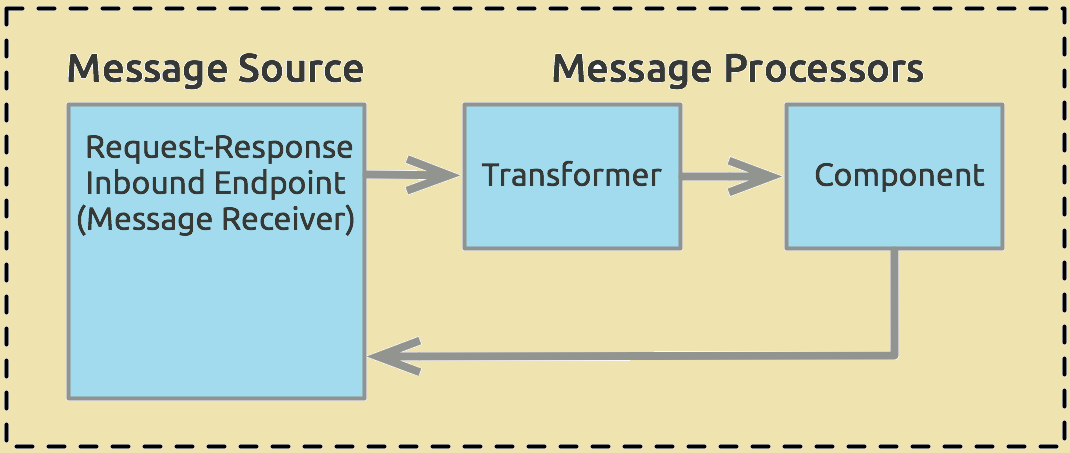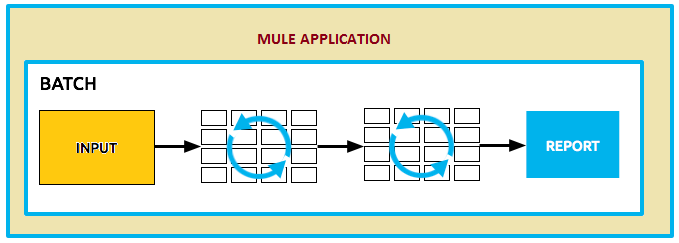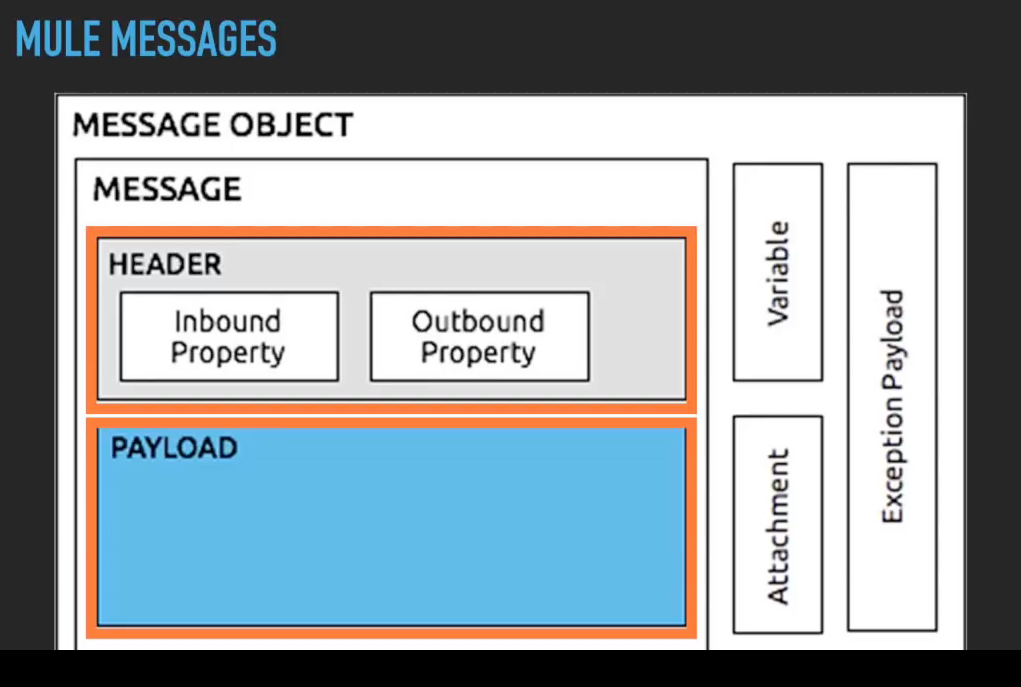MuleESB / Mule ESB Interview Questions
Mule ESB also known as mule, is a lightweight Java-based enterprise service bus (ESB) and integration platform that allows developers to connect applications together quickly and easily, enabling them to exchange data. Mule ESB enables easy integration of existing systems, regardless of the different technologies that the applications use, including JMS, Web Services, JDBC, HTTP, and more.
Mule is the runtime engine of Anypoint Platform.
An enterprise service bus (ESB) is software architecture for middleware that provides fundamental services for more complex architectures. For example, an ESB incorporates the features required to implement a service-oriented architecture (SOA). In a general sense, an ESB can be thought of as a mechanism that manages access to applications and services (especially legacy versions) to present a single, simple, and consistent interface to end-users via Web- or forms-based client-side front ends.
- Service creation and hosting exposes and hosts reusable services, using the ESB as a lightweight service container.
- Service mediation shields services from message formats and protocols, separate business logic from messaging, and enable location-independent service calls.
- Message routing route, filter, aggregate, and re-sequence messages based on content and rules.
- Data transformation exchange data across varying formats and transport protocols.
Mule is lightweight but highly scalable, allowing you to start small and connect more applications over time. The ESB manages all the interactions between applications and components transparently, regardless of whether they exist in the same virtual machine or over the Internet, and regardless of the underlying transport protocol used.
Several commercial ESB implementation provide limited functionality or built on top of an existing application server or messaging server, locking you into that specific vendor. Mule is vendor-neutral, so different vendor implementations can plug in to it. You are never locked in to a specific vendor when you use Mule.
Mule and other ESBs offer real value in scenarios where there are at least a few integration points or at least 3 applications to integrate. They are also well suited to scenarios where loose coupling, scalability and robustness are required.
Mule is based on the concept of Event Driven Architecture (EDA), works by responding to messages initiated by external resources (that is, events). Mule applications accept and process events as messages through several message processors plugged together in a flow. Alternatively, large or streaming messages can be processed as records in a batch job.
Every Mule flow contains a series of message processors that accept, then process messages. Mule applications usually contain multiple linked flows and/or batch jobs, which, in combination, perform the integration required for your use case.
A flow is the construct within which you link together several individual elements to handle the receipt, processing, and eventual routing of a message.
A Flow is a sequence of message-processing events. A message that enters a flow may pass through a wide variety of processors. In the example diagram below, Mule receives the message through a request-response inbound endpoint, transforms the content into a new format, and processes the business logic in a component before returning a response via the message source.

A batch job is a top-level element in Mule ESB which exists outside all Mule flows. Batch jobs split large messages into records which Mule processes asynchronously; just as flows process messages, batch jobs process records.

A batch job contains one or more batch steps which, in turn, contain any number of message processors that act upon records.
A batch job executes when triggered by either a batch executor in a Mule flow or a message source in a batch-accepting input. when triggered, Mule creates a new batch job instance. When all records have passed through all batch steps, the batch job instance ends and the batch job result can be summarized in a report to indicate which records succeeded and which failed during processing.
Message sources in Mule are usually Anypoint Connectors, elements which provide connectivity to a specific external source, either via a standard protocol (such as HTTP, FTP, SMTP) or a third-party API (such as Salesforce.com, Twitter, or MongoDB.)
MEL is a lightweight, Mule-specific expression language that you can use to access and evaluate the data in the payload, properties and variables of a Mule message. Accessible and usable from within virtually every message processor in Mule, MEL enables you to quickly and elegantly filter, route, or otherwise act upon the different parts of the Mule message object.
There are many open source and commercial ESB implementations available.
All major JEE vendors (BEA, IBM, Oracle, Sun) have an ESB in their catalog. It is unremarkably based on their middleware technologies and is usually at the core of a much broader SOA product suite. There are also some commercial ESBs such as Progress Software, IONA Technologies, Windows Azure service bus and Software AG.
Apache Camel, Apache ServiceMix, Apache Synapse, Red Hat Fuse ESB (based on Apache Camel), JBoss ESB, Spring Integration, Talend Open Studio for ESB are some of the open source frameworks.
The complete list is listed here.
ESB provides the middleware and interfaces that allow businesses to connect their applications without writing code.
JMS provides messaging capability and facilitates communication between the modules/applications.
- Flow Variable - that works as instance properties,
- Session Variable - that acts ike session properties,
- Record Variable - available only in Batch Job Flows.
- Routing,
- Message transformation,
- Message enhancement,
- protocol transformation,
- Service mapping,
- Message processing,
- Process choreography,
- Service orchestration,
- Transaction management,
- Enterprise integration design patterns,
- and Security.
The Mule message is the data that passes through an application via one or more flows. It consists of two main parts:
- The message header, which contains metadata about the message.
- The message payload, which contains your business-specific data.

A Mule message is, itself, embedded within a Mule message object. Some Mule message objects may contain variables, attachments, and exception payloads. However, as attachments and exception payloads are not frequently used or manipulated.
Anypoint Platform is a hybrid integration platform that enables to easily build and rapidly scale an application network of apps, data, and devices through APIs and integrations.
Thanks for your question. Scenario based questions usually will be comparison based, for example, tibco vs mule or any other integration framework. Also there may questions on mule transactions. Try to understand the question and try to answer on how you would practically approach the scenario. Try to dissect the scenario and explain based on your knowledge.
We may develop a new custom connector project in Mulesoft Any Point studio and it involves the below steps.
-
Set up Connector Project in Anypoint studio,
- Write Connector Code,
- Write Connector unit Tests (optional but recommended),
- Document the Connector for reference,
- Package the custom Connector.
